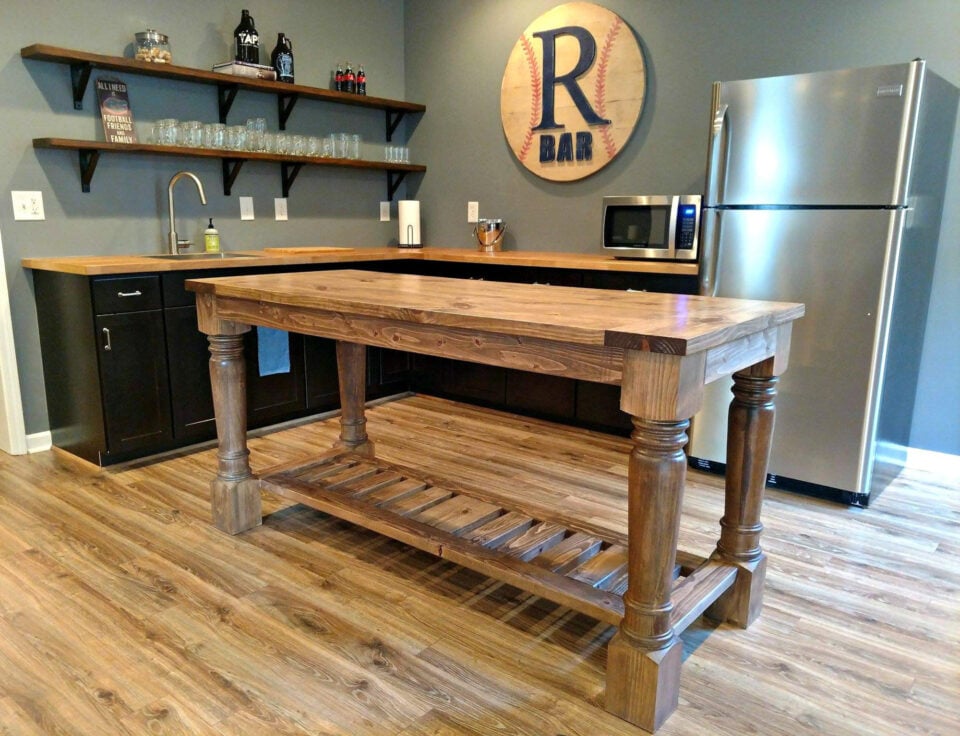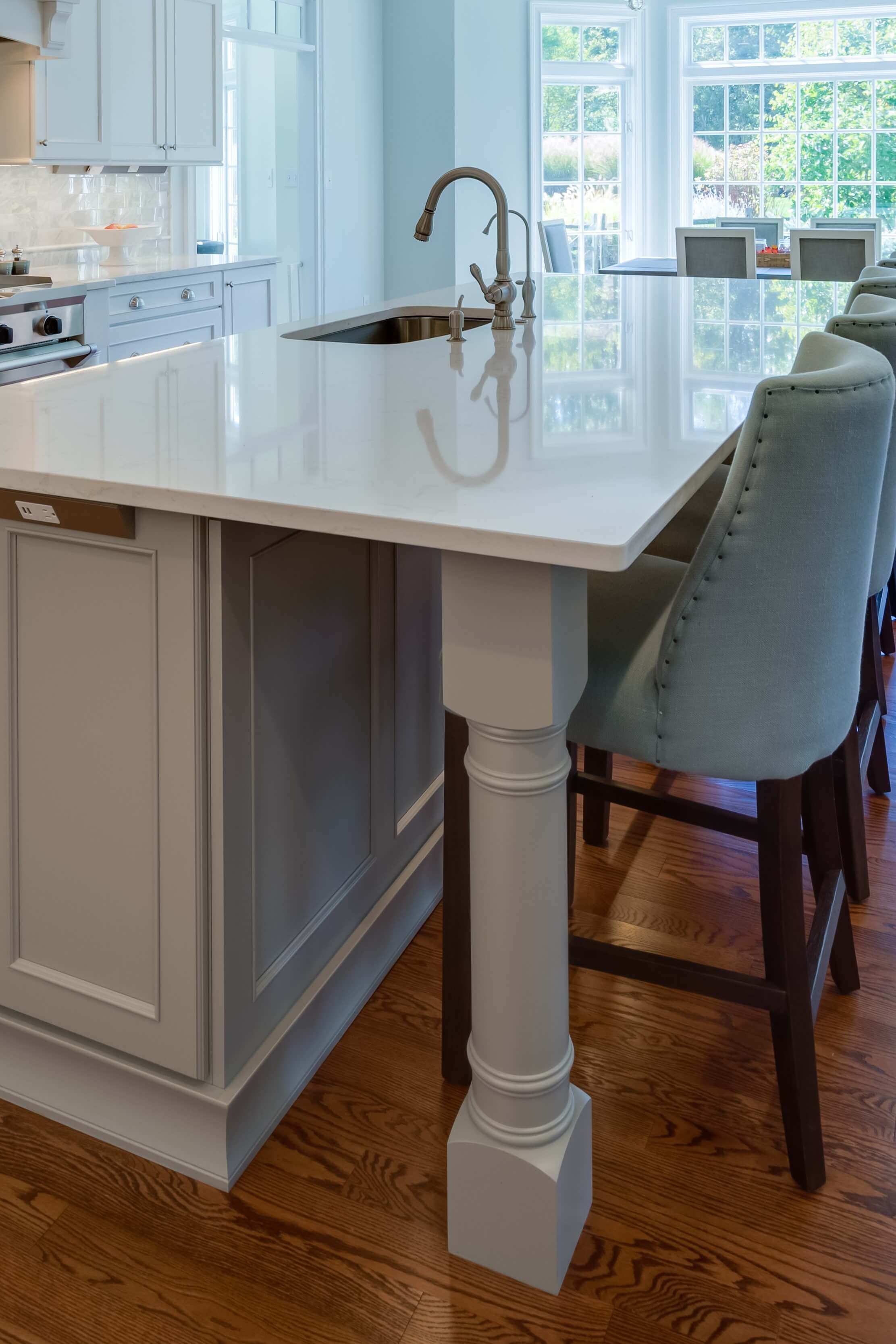Checking Out the Necessary Attributes of a Cooking Area Island Leg for Your Culinary Area
The kitchen area island serves as a main hub in any cooking room, and the choice of leg style is critical in improving both its performance and aesthetic allure. Recognizing the important features of cooking area island legs-- consisting of product choices, layout styles, and stability factors-- can considerably impact the general experience within the cooking area.
Significance of Cooking Area Island Legs
Kitchen island legs play a vital role in both the capability and visual appeals of a cooking area room. They not just sustain the weight of the island but additionally improve the overall design, adding to the cooking area's visual allure. The choice of legs can determine the style of the kitchen, be it modern, traditional, or rustic.
Functionally, robust and properly created legs ensure stability, enabling the safe use the island for numerous tasks such as cooking, eating, or amusing. Strong legs prevent moving and tottering, giving a reputable surface for everyday tasks.
Additionally, the height and positioning of the legs can influence the convenience level for those seated at the island. A well-considered elevation can accommodate bar feceses or chairs, promoting a welcoming atmosphere for celebrations.
In addition to these practical factors to consider, kitchen island legs can function as a centerpiece in the room (kitchen island leg). Ornamental or distinctly designed legs can elevate the design aesthetic, making the island a centerpiece. Hence, picking the right cooking area island legs is necessary for stabilizing kind and function in any type of culinary space
Product Options for Legs
Selecting the appropriate product for kitchen island legs considerably influences both toughness and layout. Typical material choices include timber, rock, and steel, each offering distinct advantages.
Timber is a prominent selection as a result of its heat and versatility. It can be conveniently tailored to match numerous style styles, from rustic to modern. Woods like oak and maple supply outstanding strength and durability, while softer timbers can be much more susceptible to put on and tear.
Metal legs are preferred for their smooth, contemporary aesthetic. kitchen island leg. Stainless-steel and aluminum are not only robust however also resistant to corrosion and rust, making them perfect for kitchen area environments. They can create an industrial appearance and are frequently readily available in different surfaces to complement other kitchen components
Rock legs, such as granite or marble, add an element of deluxe and stability. While larger than various other materials, they use remarkable longevity and can hold up against significant weight. They may call for extra support to make sure correct equilibrium.
Inevitably, the option of product should align with both practical needs and the total style vision of the kitchen area room, guaranteeing that the island legs boost both utility and aesthetic appeals.
Layout Designs to Take Into Consideration
What layout styles should be taken into consideration when choosing legs for a kitchen area island? The option of leg design dramatically affects the total aesthetic of your culinary area. For a contemporary kitchen area, minimalistic and smooth leg layouts, such as stainless steel or geometric forms, can improve the modern-day appeal, offering a tidy and minimalist appearance.
In comparison, traditional cooking areas take advantage of timeless styles such as transformed or sculpted wood legs, which include warmth and character. These choices usually feature detailed information that match vintage home furnishings. For a rustic atmosphere, take into consideration legs made from redeemed timber or wrought iron, which bring a natural, natural top quality to the space.
If you lean towards an industrial motif, robust metal legs with a troubled coating might be suitable, supplying an edgy yet innovative touch. Additionally, farmhouse style cooking areas can incorporate beefy legs that stimulate a sense of strength and homeliness.

Elevation and Stability Variables
The elevation and security of a kitchen area island are critical aspects that directly affect its capability and customer experience. An ideal kitchen area island leg must supply adequate height to suit a range of jobs, from food prep work to informal eating.
Stability is similarly crucial, especially as kitchen area islands commonly serve as focal points in cooking settings. A steady leg style reduces shifting and wobbling, which can bring about mishaps or discomfort throughout use. Products such as solid wood, steel, or a combination thereof are typically employed to achieve the essential durability. The leg's attachment to the island's base must be protected, ensuring durability and resilience against the wear and tear of daily usage.
Modification and Accessories
Modification choices and devices for kitchen area island legs can dramatically improve both the aesthetic appeal and capability of the room. Home owners can pick from a variety of products, including rock, wood, and metal, permitting seamless combination with existing cooking area design. The selection of surface-- be it an all-natural stain, repaint, or powder layer-- additional personalizes the appearance, making certain that the island matches the overall design theme.
In enhancement to product and surface, home owners may additionally explore the unification of devices such as attractive brackets, adjustable feet, or integrated shelving. Braces can use added support while adding to a modern-day or rustic aesthetic. Flexible feet are especially valuable for unequal flooring, ensuring the island continues to be stable and level, which is critical for both safety and security and usability.

Conclusion
In conclusion, cooking area island legs offer an important duty in giving stability and enhancing the total visual of the culinary space. The choice of products and layout styles contributes to both capability and visual allure, while considerations of elevation and security make sure useful usage. Customization options and devices can boost the cooking area island, making it a distinctive focal point within the home. Hence, careful factor to consider of these attributes is crucial for an efficient cooking area design.
The kitchen area island serves as a main center in any type of cooking area, and the choice of leg style is crucial in boosting both its capability and visual charm. Recognizing the vital features of cooking area island legs-- including product alternatives, layout styles, and security variables-- can substantially impact the total experience within the kitchen.Kitchen area island legs play a vital function in both the functionality and aesthetics of a kitchen area.What design styles should be thought about when picking legs for a cooking area island?In final thought, cooking area island legs offer a vital function in giving stability and enhancing the total visual of the culinary area.